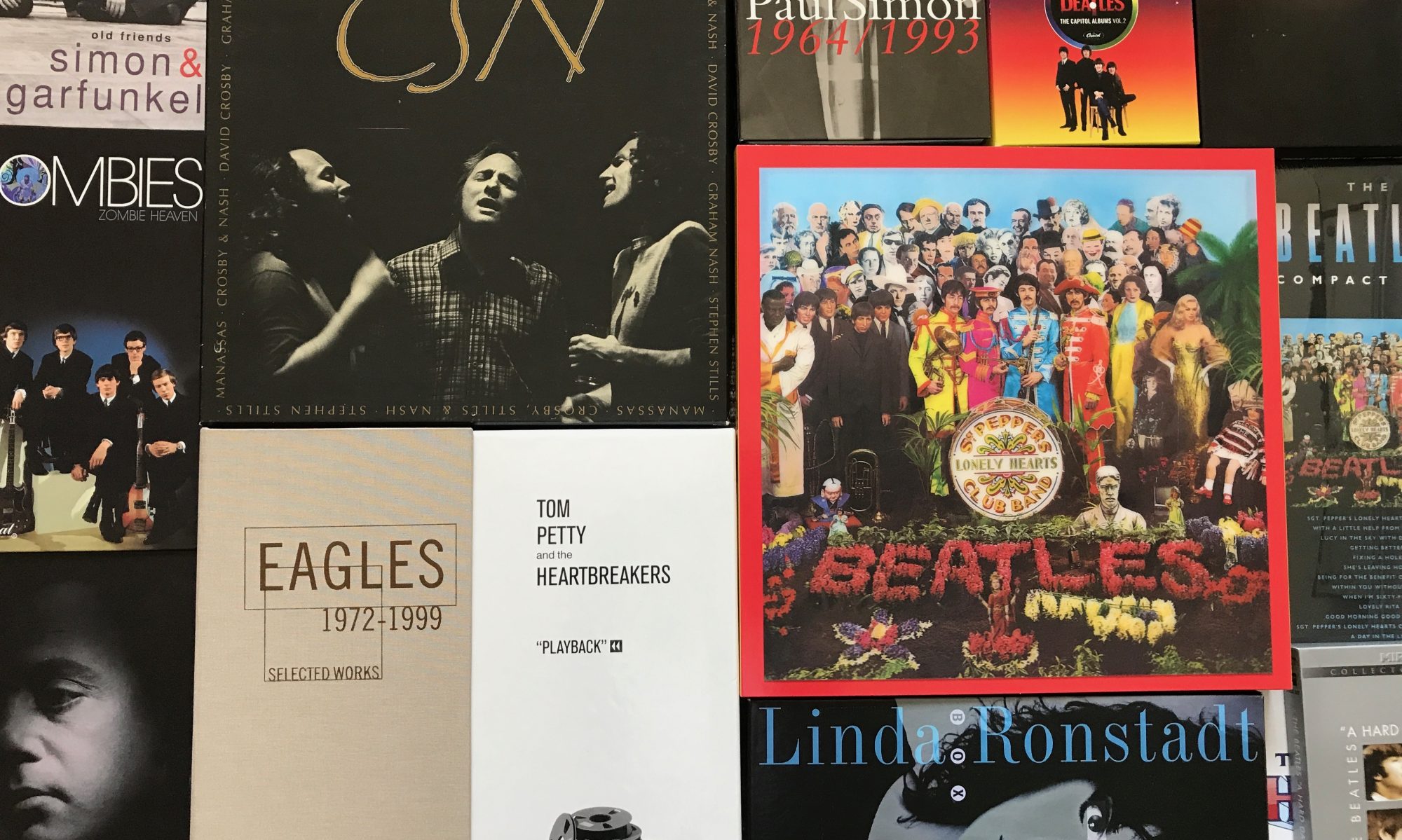Their previous groups were so good. The Byrds, Buffalo Springfield, and The Hollies. By 1968, David Crosby was out of The Byrds, and Stephen Stills’ group, Buffalo Springfield, had broken up. The Hollies played L.A., and Graham Nash (who met Crosby in 1966) was hanging out with friends. He heard David and Stephen singing a new song, “You Don’t Have To Cry”. Eventually, Graham added a high harmony to their vocals…and Crosby, Stills & Nash was born. Of course Nash had to leave the Hollies, and there were legal aspects to clear up, but we know it happened.
Crosby, Stills & Nash featured three guys who could all write songs, sing lead, sing harmony, and play multiple instruments. The album was presented to the world on May 29th, 1969.
Each songwriter was introduced right away. It starts with “Suite: Judy Blue Eyes” by Stephen Stills, “Marrakesh Express” by Graham Nash, and “Guinevere” by David Crosby. That’s the “snapshot” of the group. Stills is a rocker with a folk/country edge, Nash has more of a pop sound, and Crosby the free-spirited hippie. All three are far more musically complex than that, but these songs do give you a feel for them.
 Stephen Stills with (Sweet Judy Blue Eyes) Judy Collins
Stephen Stills with (Sweet Judy Blue Eyes) Judy Collins
Stills turned his love and breakup with his girlfriend into a classic recording… “Suite: Judy Blue Eyes”. The suite of melodies displays all of CSN’s strengths in about seven-and-a-half-minutes.
 (We bought this jukebox single in the ‘80’s.)
(We bought this jukebox single in the ‘80’s.)
If you look closely, you can see this is an edited version (4:35) like was heard on AM stations. 1969 was a time when only FM stations played the “long” album versions. Stills played all the instruments on “Suite: Judy Blue Eyes”, and handled the majority of the instrumentation for the rest of the album. By the way, it would seem that Stills’ excellent Buffalo Springfield songs “Bluebird” and “Rock and Roll Woman” were also inspired by Judy Collins. They’re still friends, and in recent years, the two have done an album and a series of concerts together.
“Marrakesh Express” was the first single. This was Graham Nash starting a trend of coming up with solid commercial songs for the group. He says he presented the song to The Hollies, and they recorded it, but never released it. Nash’s writing kept developing, and he contributed some of the group’s most popular songs. Another of his songs that stands out on CSN’s first album is the gently beautiful “Lady Of The Island”.
David Crosby was never a “commercial” songwriter, but he gave the trio a distinctive sound with beautifully atmospheric songs like “Guinevere”, and a social conscience with songs like “Long Time Gone”. Crosby and Nash are both great harmony singers, and “Guinevere” represents the first time we heard the delicate blending of their voices. Actually, the first time I listened to the album I only had time to hear those first three songs, and “Guinevere” confirmed I’d made a special purchase.

Recent releases of old recordings, like the Just Roll Tape album of Stephen Stills demos from 1968, and the CS&N Demos collection from ’68 & ’69 have revealed more about what was musically happening as they put together their first album.
The Stills release is a revelation. It’s just him and his acoustic guitar running through a bunch of new songs as the tape runs in a studio. This was in April of 1968 before Crosby, Stills & Nash had formed. Already, he had “Suite: Judy Blue Eyes”, “Helplessly Hoping” and “Wooden Ships”. David Crosby is listed as a co-writer of “Wooden Ships”, so he was writing with Stills prior to the start of CSN. The demo had everything except the introduction section with two people on the opposite sides of a war.
The stunning thing is how many more songs he already had that would appear on future albums. “So Begins he Task”, “Do For The Others”, “Know You Got To Run”, “Change Partners”, “Black Queen” and “Treetop Flyer”. How in the world could he have waited so long to officially record and release some of these? A studio version of “Treetop Flyer” didn’t come out until 23 years later, 1991!

The best cut on CS&N’s Demos is an early version of “Long Time Gone”. It has standout bass and percussion by Stills and a great vocal by Crosby, with no harmony vocals. This was in 1968, and it reminds me of a song from 1969… “Come Together” by The Beatles. That prominent bass part would have made “Long Time Gone” so unique if they had released it that way. Here it is:
The first time one listens to Crosby, Stills & Nash, the quality of the songs and the beautiful harmonies are the easy takeaways. This album led me into buying nearly everything else these three and Neil Young have recorded.
 (Special edition remastered CD)
(Special edition remastered CD)
With one of the best debut albums ever, Crosby, Stills & Nash were ahead of the curve with acoustic-based music. They helped usher in the 1970’s golden age of singer-songwriters and the west coast sound. The Grammy Awards didn’t miss this significant release. CS&N won the “Best New Artist” award. Good call.





